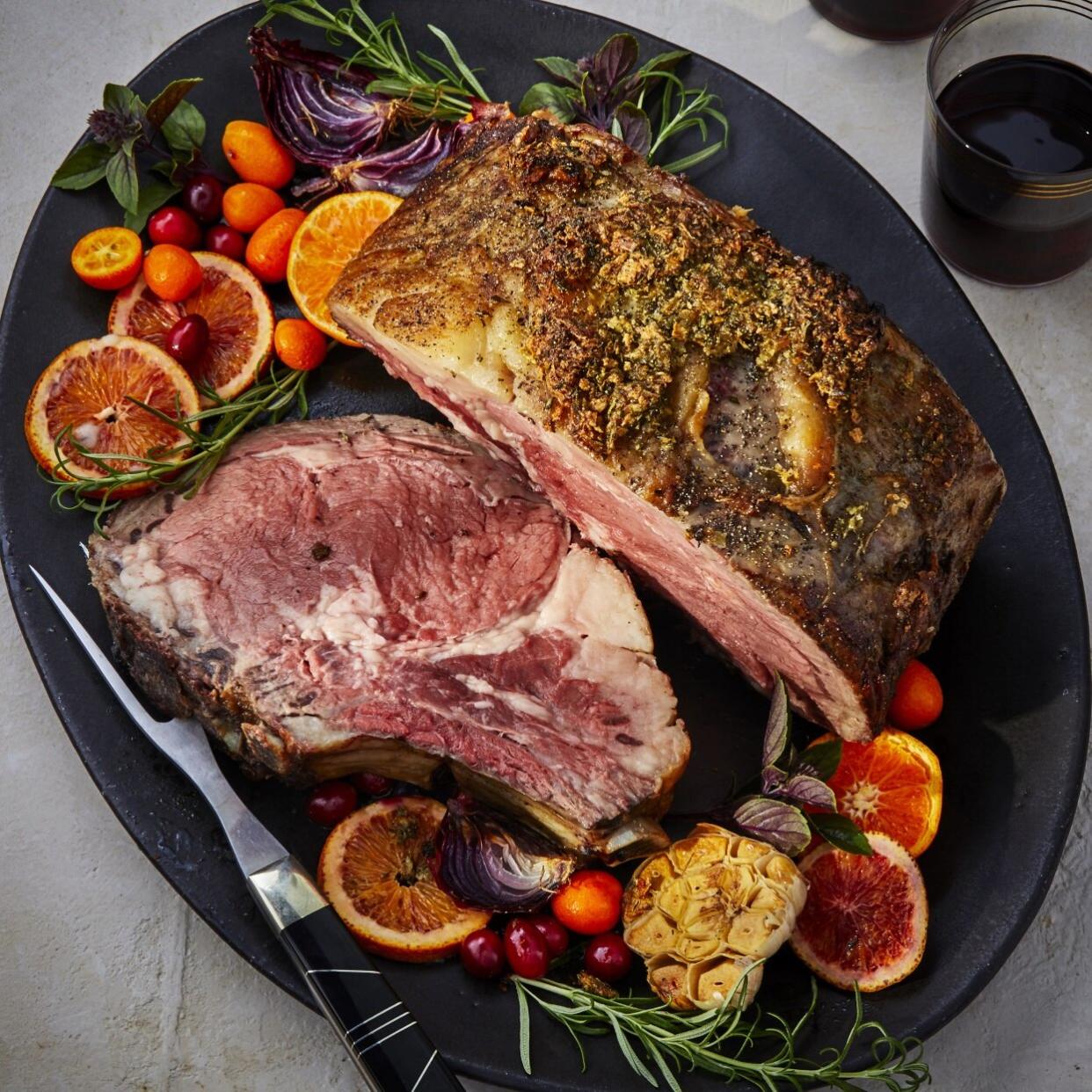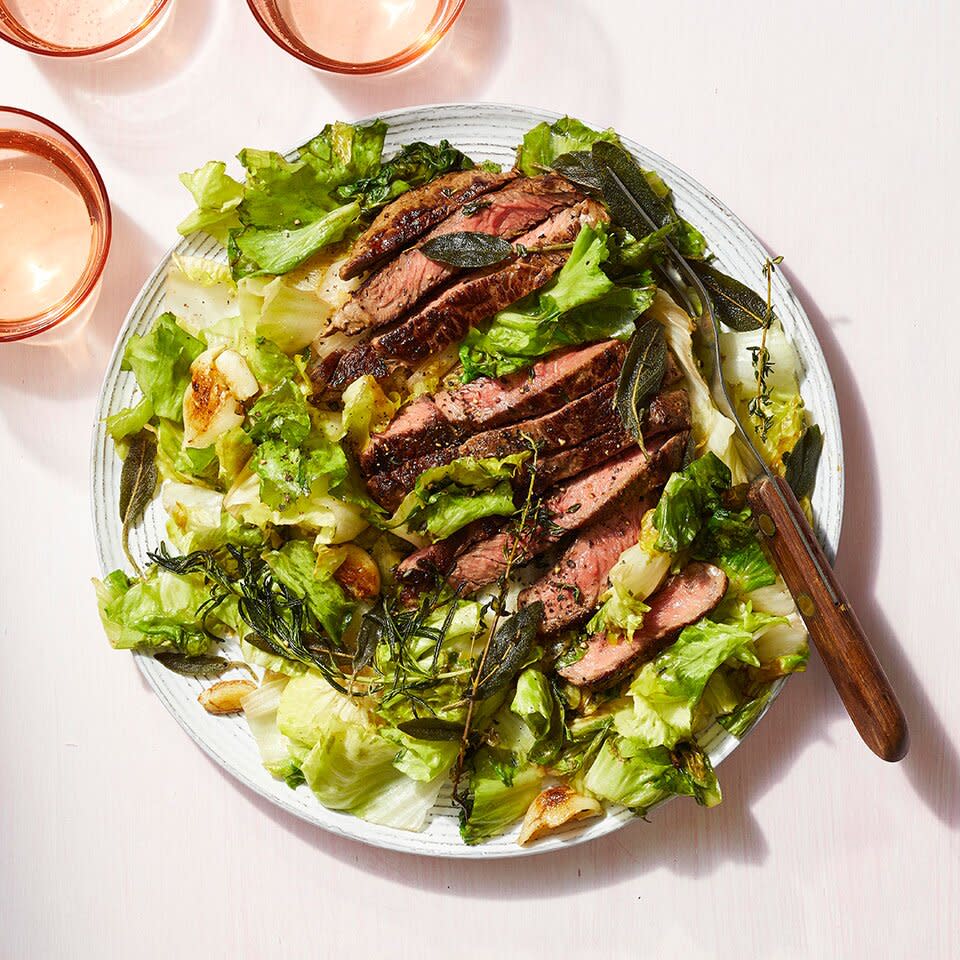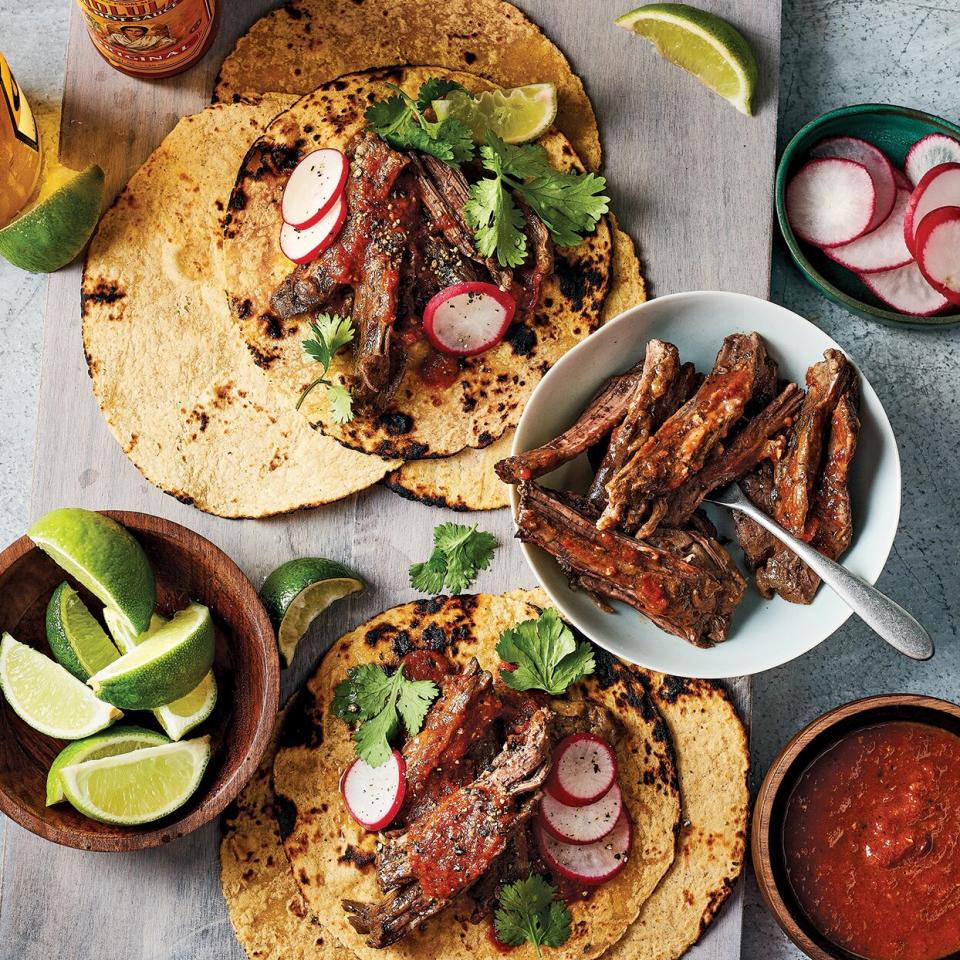Clean Eating Buyer's Guide to Beef

Photographer: Antonis Achilleos Prop Stylist: Lindsey Lower Food Stylist: Margaret Monroe Dickey
When buying beef there are many choices to make besides what cut to use. This includes what the animal was fed, what medications it might have been given and how it was treated during its life. This guide covers what to look for at the market, how to understand the package labels and what to ask when you're buying beef at a farmers' market or directly from the farmer.
Featured recipe: Perfect Prime Rib
Fresh beef should be bright red. Occasional gray or brownish discoloration caused by oxidization can be unappealing but is safe to eat. Vacuum-packaged beef will be maroon because of the lack of oxygen. The meat should be firm to the touch with little to no excess moisture in the package, and the packaging should be in good condition. Avoid beef that has a bad odor or is sticky or slimy to the touch. Finally, be sure to check the "use by" date.
Refrigerate or freeze beef as soon as possible after purchase. Be sure to cook it or freeze it by the "use by" date on the package. If you're freezing beef for longer than two weeks, make sure it is wrapped tightly, either in a vacuum-sealed package, heavy-duty foil, freezer paper or in a freezer bag. Frozen beef should be defrosted in the refrigerator, never at room temperature, to prevent bacterial growth.
See: Healthy Beef Recipes
Here are some of the most common ways that beef is labeled and marketed, along with definitions of what those words mean:
Prime, Choice or Select Beef
The USDA assigns a quality grade to beef, determined by the amount of marbling and the age of the animal, both of which affect the tenderness, juiciness and flavor of the meat. Prime meat has the most marbling (fat) within the meat, making it juicy and flavorful but also increasing its fat content; Select has the least marbling; Choice is in the middle.
Beef Raised Without Antibiotics

Recipe: Chili Con Carne
This term indicates that the animal wasn't given antibiotics to prevent or treat a disease or to promote growth.
Beef With No Hormones Added
Producers who show documentation that they do not use hormones to promote growth when raising their cattle may use this label.
Natural Beef
One of the most widely used labels, the term means only that the meat has been minimally processed and doesn't contain any artificial ingredients or preservatives. "Natural" doesn't address standards of care, type and quality of feed or administration of medications.
Percent Retained Water

Recipe: Pan-Seared Steak with Crispy Herbs & Escarole
To control pathogens like Salmonella, producers must quickly lower the temperature of meat during processing. Most do this by immersing the slaughtered animals in a cold bath, which causes them to absorb water. The USDA requires producers to list the maximum amount of water that may be retained.
Certified Organic Beef
This USDA-regulated term means that all feed given to cattle must be certified organic, which means no synthetic fertilizers, pesticides, animal by-products or other additives. Farmers cannot use antibiotics or growth-promoting hormones on cattle raised to meet certified organic standards. The animals also must have access to pasture.
Certified Humane Raised & Handled Beef

Recipe: Slow-Cooker Red Chile-Beef Tacos
Overseen by a nonprofit endorsed by the American Society for the Prevention of Cruelty to Animals and the Humane Society of the United States, this label ensures the animal received basic standards of care. For example, in conditions of extreme heat, sun shades and water-cooling systems must be available to cattle. Feed must be fresh. Cattle must have sufficient room to lie down in their normal positions in a clean area.

